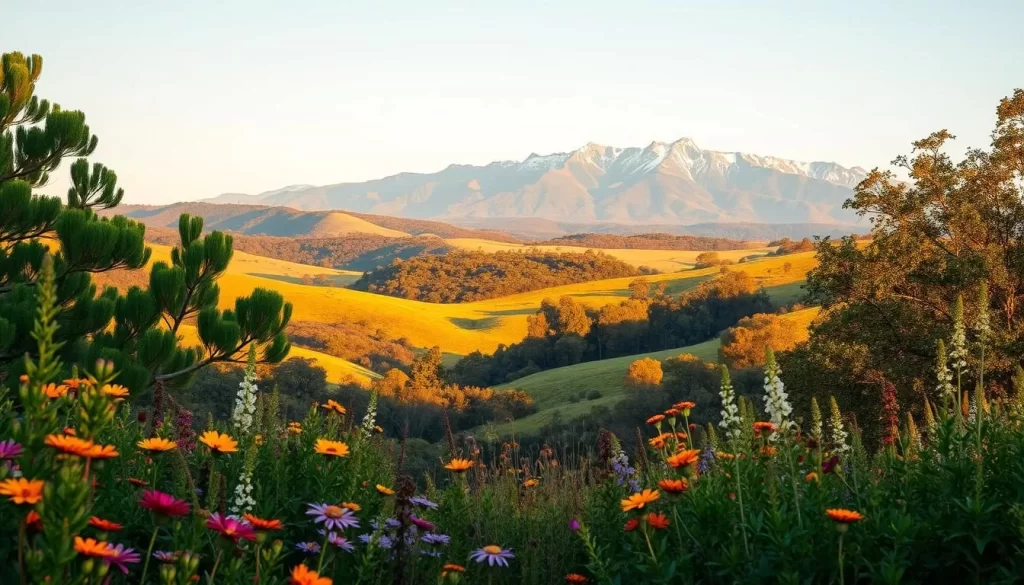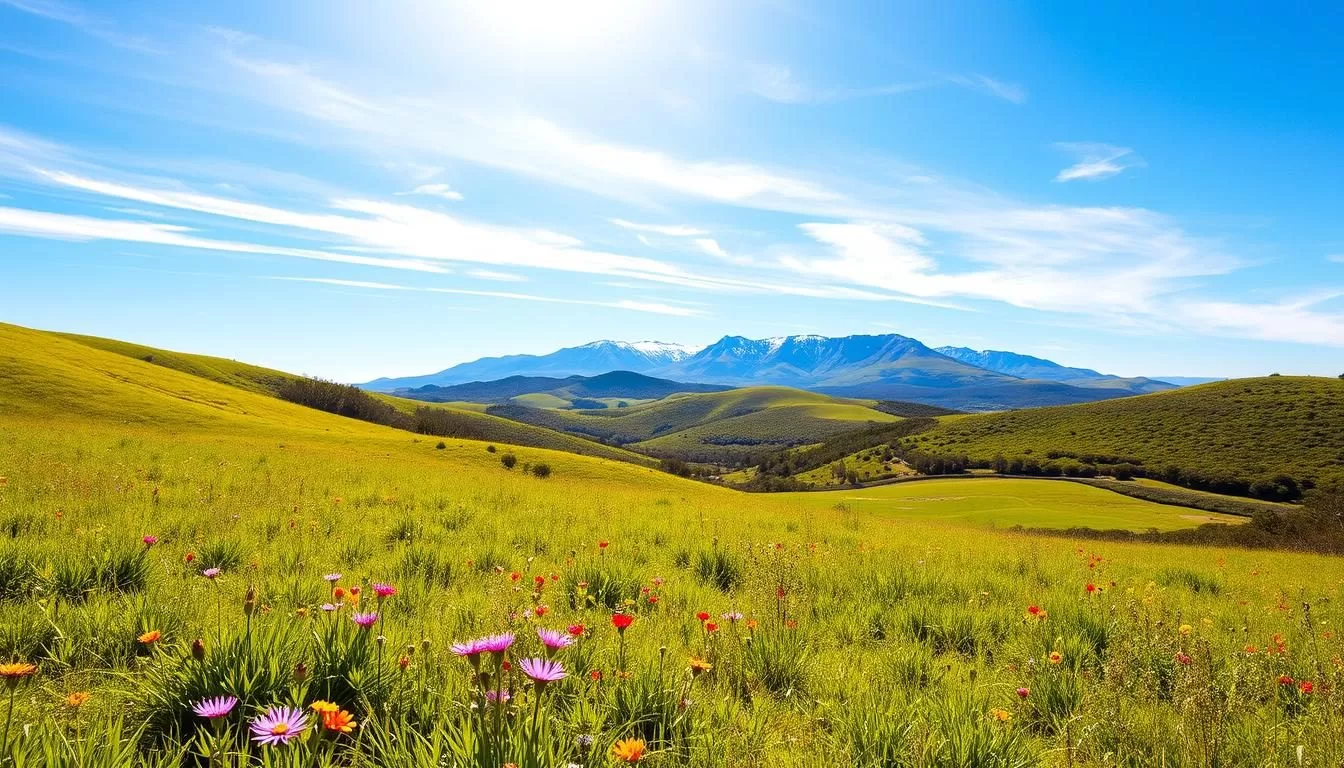Choosing the right time to explore a new destination can make all the difference. When planning your trip, understanding the weather patterns is key to enjoying your experience to the fullest. Whether you’re looking for mild temperatures or avoiding extreme heat, timing your visit wisely ensures a memorable adventure.
This guide is designed to help you navigate the seasonal changes in a specific region. You’ll find detailed insights into temperature trends, rainfall data, and the best time to visit. For example, May offers cooler conditions, perfect for outdoor activities like trekking and stargazing.
By aligning your travel plans with the optimal month, you can enjoy fewer crowds, budget-friendly options, and a more relaxed pace. Let’s dive into the details to help you plan a seamless and enjoyable trip.
Overview of the Australian Capitol Territory Climate
Understanding the climate of a region is essential for planning a seamless trip. The area experiences distinct seasonal changes, each offering unique opportunities for exploration. Whether you’re visiting during the mild spring or the cooler winter, knowing what to expect can enhance your experience.

Seasonal Climate Patterns
The region transitions smoothly from spring to autumn, with each season bringing its own charm. Spring is particularly popular, with pleasant daytime temperatures averaging around 20°C (68°F). This period also marks the end of the wet season, reducing humidity and making outdoor activities more enjoyable.
Winter, on the other hand, is cooler but still comfortable for travel. The average number of sunny days in April is around 20, making it ideal for sightseeing and nature walks. These patterns are consistent across the region, including neighboring areas like New South Wales.
Temperature and Rainfall Trends
Temperature and rainfall vary significantly throughout the year. Below is a detailed breakdown of the average conditions:
| Season | Average Temperature (°F) | Average Rainfall (mm) |
|---|---|---|
| Spring | 52-77 | 40 |
| Winter | 37-59 | 50 |
These trends highlight the importance of choosing the right time visit. For instance, April offers lower rainfall and fewer crowds, making it a great option for budget-conscious travelers.
Regional variations also play a role. While the area enjoys mild weather, nearby tropical regions experience more pronounced rainfall patterns. Understanding these differences can help you plan a more enjoyable travel experience.
Planning Your Visit: Weather, Packing, and Budget Tips
Planning your trip with weather and budget in mind can make your holiday more enjoyable and stress-free. Whether you’re exploring the vibrant streets of New South Wales or the serene landscapes of Western Australia, being prepared ensures a smoother experience. Let’s dive into practical tips for packing and saving money during your journey.

What to Pack for Varied Weather Conditions
Weather can be unpredictable, so packing smartly is key. If you’re heading to tropical regions like Northern Queensland, bring waterproof shoes, a raincoat, and an umbrella. These items are essential for handling sudden downpours, especially in March when Cairns receives over 14 inches of rain.
For cooler areas like South Wales, pack light layers such as a jacket or sweater. Evenings can get chilly, so having versatile clothing ensures you’re comfortable throughout the day. Don’t forget a bathing suit if you plan to enjoy warmer afternoons by the beach.
“Packing for all weather possibilities means you’re ready for anything, from sunny skies to unexpected rain.”
Cost-Saving Strategies During Off-Peak Periods
Traveling during off-peak periods can significantly reduce your expenses. Airfare and accommodations are often cheaper outside of peak holiday seasons. For example, March is an excellent time to visit as crowds thin out and prices drop.
Here’s a quick comparison of costs during peak vs. off-peak periods:
| Expense | Peak Period | Off-Peak Period |
|---|---|---|
| Airfare | $800 | $500 |
| Accommodation | $150/night | $90/night |
By planning your trip during quieter months, you can save money and enjoy a more relaxed pace. This approach also allows you to explore popular attractions without the hassle of large crowds.
Thoughtful planning, from packing to budgeting, ensures your trip is both enjoyable and cost-effective. Whether you’re navigating rain in tropical zones or cooler nights in the south, being prepared makes all the difference.
Australian Capitol Territory, Australia: Best Months for a Weather-Savvy Trip
Timing your visit to align with favorable weather conditions can transform your travel experience. By analyzing climate data and traveler feedback, you can pinpoint the best time to explore this vibrant region.

Analyzing Weather Data to Identify Optimal Months
Weather variables like temperature and rainfall play a crucial role in determining the best time visit. For instance, March offers mild conditions, with average temperatures ranging from 52°F to 77°F, making it ideal for outdoor activities.
Rainfall is another key factor. Months like April and May see lower precipitation, ensuring fewer disruptions to your plans. These periods also coincide with fewer crowds, allowing you to enjoy a more relaxed pace.
Navigating Peak vs. Off-Peak Periods
Traveling during off-peak periods offers numerous advantages. Airfare and accommodations are often more affordable, and popular attractions are less crowded. For example, March is a transitional month with fewer tour groups, making it a budget-friendly option.
Here’s a comparison of peak and off-peak travel benefits:
| Aspect | Peak Period | Off-Peak Period |
|---|---|---|
| Cost | Higher | Lower |
| Crowds | Dense | Sparse |
| Weather | Variable | Mild |
“Traveling during off-peak periods not only saves money but also offers a more intimate connection with the place.”
Understanding local weather trends ensures a memorable and pleasant trip. Whether you’re exploring the world or focusing on this specific region, aligning your plans with optimal conditions enhances your overall experience.
Local Cultural Events and Seasonal Attractions
Immersing yourself in local culture can elevate your travel experience to new heights. From vibrant festivals to public holidays, the area offers a rich tapestry of events that complement its pleasant climate. Planning your visit around these celebrations ensures a deeper connection with the region and its traditions.

Seasonal Festivals and Public Holidays
Spring and autumn are particularly lively seasons, with events like the Sydney Gay and Lesbian Mardi Gras drawing global attention. This iconic festival, held in March, features parades, performances, and a vibrant atmosphere that celebrates diversity.
Another highlight is the Moomba Festival, a family-friendly event in Melbourne that includes carnival rides, live music, and fireworks. Held in March, it’s a perfect way to enjoy the mild climate and immerse yourself in local culture.
Public holidays like Labour Day and St Patrick’s Day also add to the festive spirit. These occasions often feature parades, live music, and community gatherings, making them ideal for visitors seeking an authentic experience.
“Cultural festivals are the heartbeat of a region, offering a window into its soul and traditions.”
For those exploring the northern territory, events like the Darwin Festival in August showcase indigenous art, music, and dance. This celebration highlights the rich heritage of the area, providing a unique cultural experience.
To make the most of your trip, consider aligning your itinerary with these events. Not only will you enjoy the favorable climate, but you’ll also gain a deeper appreciation for the local culture. For more ideas on budget-friendly activities, check out this guide.
Whether you’re attending a festival or celebrating a public holiday, these experiences add a layer of excitement to your journey. For insights on the best time to visit other regions, explore this resource.
Exploring Regional Weather Variability Across Australia
Understanding the diverse weather patterns across regions can help you plan a more enjoyable trip. The continent’s vast size creates distinct climates, from tropical zones in the north to cooler, drier areas in the south. These differences influence everything from outdoor activities to the timing of festivals and events.
Comparing Northern and Southern Weather Trends
Northern regions, like Northern Queensland, experience heavy rainfall and are prone to cyclones. In contrast, southern areas, including Canberra, enjoy milder, more stable weather. For example, the southeastern region has seen a 15% decrease in late autumn and early winter rainfall since the mid-1990s.
These contrasts are evident in the average temperatures and rainfall totals. Below is a comparison of key weather metrics:
| Region | Average Temperature (°F) | Average Rainfall (mm) |
|---|---|---|
| Northern Queensland | 77-95 | 200 |
| Canberra | 37-77 | 50 |
Traveling in tropical zones offers lush scenery but requires preparation for sudden downpours. Southern regions, on the other hand, provide a more predictable climate, ideal for sightseeing and outdoor events.
Planning Activities Around Regional Weather
National parks and outdoor attractions vary significantly across the continent. Tropical areas like the Daintree Rainforest are perfect for exploring dense greenery, while southern parks, such as the Blue Mountains, offer cooler conditions for hiking and photography.
For example, the Surf Coast region has identified opportunities to reduce seasonality in tourism by leveraging its mild climate. This approach ensures that festivals and events can be enjoyed year-round, regardless of the time year.
“Understanding regional weather differences allows you to tailor your itinerary for maximum enjoyment and comfort.”
If you’re planning a trip to Sydney, check out this guide for insights into the best times to visit. By aligning your plans with regional weather patterns, you can make the most of your journey across this diverse continent.
Conclusion
Planning your trip around weather patterns ensures a smoother and more enjoyable experience. By focusing on average temperatures and rainfall trends, you can choose the best time for outdoor activities and exploring nature. For instance, the dry season offers ideal conditions for sightseeing and fewer disruptions.
Traveling during off-peak periods not only saves money but also allows you to enjoy attractions without the crowds. Packing smartly for varied weather ensures you’re prepared for any night chill or sudden rain. Additionally, aligning your visit with local events adds cultural richness to your journey.
Understanding regional differences, such as those between South Australia and tropical zones, helps tailor your itinerary. Whether you’re hiking or attending festivals, a weather-savvy approach enhances every activity. Use this guide to plan a memorable and rewarding trip.
Ready to start your adventure? Begin planning today and make the most of your travel experience. For more tips, check out this complete guide to exploring the region.
The above is subject to change.
Check back often to TRAVEL.COM for the latest travel tips and deals.






